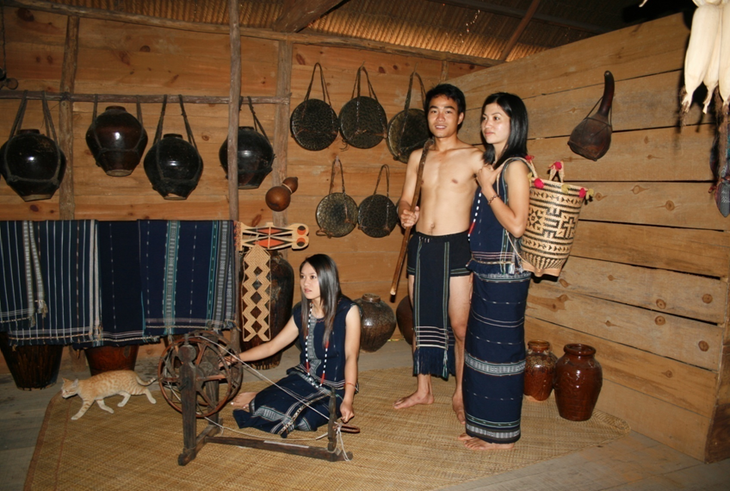(VOVworld) – Like many other ethnic groups in the Central Highlands, the K’ho have a tradition of weaving and making clothes for themselves. To Tuan introduces the costumes of the K’ho, which reflect their unique cultural identity.

Traditional clothes of K'ho men and women (photo: thienlamtravel.com) |
In the old days, K’ho people wore a minimum of clothing. Both men and women were commonly bare to the waist. Men wore loin-cloths and women wore skirts. As it was difficult to weave fabric, they soaked bark in water and tied it to their bodies with rattan cords in the winter. Although the K’ho have improved their weaving skills and have been able to produce a lot of fabric, men still wear loincloths as a basic piece of clothing. A loincloth is a 1.5 to 2 m long piece of cloth, passed between the thighs and wound around the waist. The flaps hang down in front and back. Duôm Dai Bat, a K’ho man, says: “The decorative patterns on the cloth have remained traditional. They are horizontal and vertical lines. Both ends of the loincloth have tassels. The flaps must hang down to the knees.”
On special occasions, K’ho men wear a black top which has a round neck and is sleeveless. In the past they used fabric strings to tie the shirt on. Now the shirt has buttons. On the black cloth, they embroider flowers and bird’s eyes.
K’ho girls learn to weave and make clothes when they are small. They make clothes for all family members and their dowry when they get married. They wear their most beautiful clothes to festivals and wedding ceremonies to show off their skills and attract young men.
K’ho women prefer to wear a brocade skirt that hangs to the knees and a short, closefitting jacket. The women weave into their clothes geometrical patterns and images of things in nature such as animals and farm tools. Lê Văn Cương, a folklorist and collector of ethnic costumes, says: “K’ho fabric has unique decorative patterns. They prefer dark colors like black and blue. The women weave patterns on both sides of the cloth. They have to remember the rules of using threads to make different patterns.”
Now the K’ho wear more modern clothes than traditional clothes in their everyday life. But they still uphold their ancestors’ weaving techniques to preserve their cultural uniqueness.